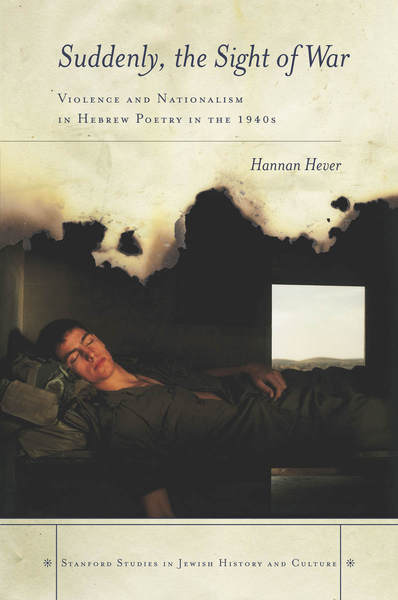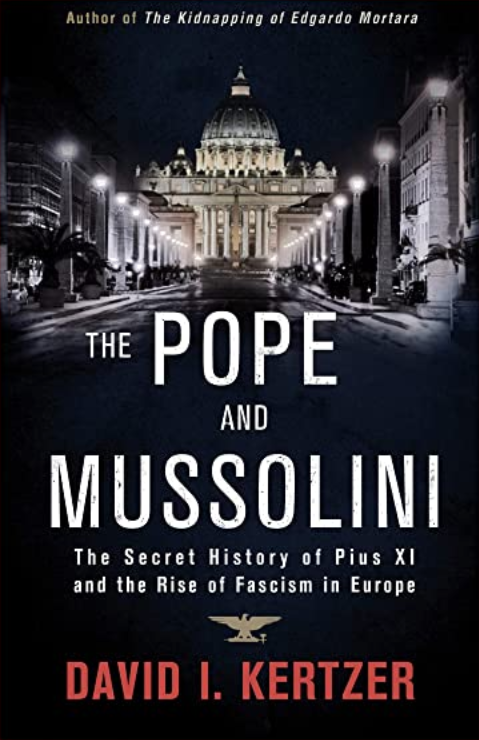
The volume Suddenly, the Sight of War by the Israeli scholar and literary critic Hannan Hever focuses on the Hebrew poetry of the 1940s and the ways in which issues of violence, victimhood and nationalism are portrayed. Drawing upon his extensive knowledge of Hebrew literature and thanks to a close textual reading of the works of renowned authors such as Leah Goldberg, Natan Alterman, Amir Gilboa and Haim Guri, Hever writes a rich study of the poetry produced in defining decades for the history both of Israel and of the European Jews, when events like the Second World War, the Holocaust and later on the Israeli War of Independence (1948) led to a profound reshaping of modern Jewish identity. The book – first published in Hebrew by Ha-kibbutz ha-meuchad a few years ago – is divided into three parts: part one is dedicated to Hebrew symbolist poetry during the Second World War; the second to the themes of historical analogy and national allegory, and the third and last to the representation of death around 1948.
In the first part, Hever illustrates the intellectual debate around symbolism that emerged in the early 1940s and in which authors such as Avraham Shlonsky, Leah Goldberg, Yocheved Bat-Miriam and others took part. He presents the figure of the living-dead as central in order to understand Hebrew symbolism and its ideological basis: an example of that is the poem Tefillat naqam (“Prayer for revenge”) by Natan Alterman, that discusses the figure of the dead who returns in order to observe the living and asks for revenge as the solution to persecution. Another interesting case is that of the renowned poet Leah Goldberg, who – Hever notes – refused to write about war openly, so as to try finding a more personal role for herself as woman poet and intellectual. Amir Gilboa instead is viewed as the author of a more realist poetry than that of Alterman, and a sort of trait d’union between the former and the expressionism of someone like Uri Zvi Greenberg.
The second part of Suddenly, the Sight of War opens with a detailed analysis of Alterman’s Shirei makkot Mitzrayim (“The poems of the plagues of Egypt”), where the poet describes revenge and violence from the point of view of the inhabitants of ancient Egypt suffering from the biblical Ten Plagues. Hever analyses in-depth Alterman’s masterpiece, published in 1944, and underlines the poet’s sensitivity “to the distress of members of the nation of [the anti-Jewish] persecutors” (p. 80). Whereas other scholars – for example Dan Miron – downplay the historical analogy between Pharaonic Egypt and Nazi Germany, Hever contends that this aspect is crucial for understanding Shirei makkot Mitzrayim and its allegoric stance, as well as Alterman’s view on Jewish behavior and resistance during the Holocaust. For Alterman, that of the Jewish People is not “a linear story of the powerful and rosy future of the collective,” as hegemonic (Zionist) Hebrew poetry seemed to imply, but “the story of those who seek to plant hope of an existence for both individuals and a collective with limited and modest aspirations” (p. 133). Similar non-hegemonic stances can be found in the work of Yocheved Bat-Miriam, with whom Hever ends the second part of the volume. Bat-Miriam’s 1943-Shirim la-ghetto (“1943-Ghetto poems”) continued the tradition of Hebrew symbolist poetry while, at the same time, introducing a double longing for Palestine and Russia. As opposed to the strictly territorialist principles upon which much of the modern Hebrew literature was based, Bat-Miriam created an alternative space that is not subject to nationalist needs but to her own identity as woman and post-Holocaust Jew.
In the third part, Hever investigates symbols of death in the poetry published at the time of the Israeli War of Independence. It is then that “the dead are once again brought back to life” (p. 175) and the figure of the living-dead, that is “the fighter whose material existence is lost but whose imagined national presence is thereby strengthened” (Ibid.), once again becomes central. Suffice to think of the famous 1949 poem Hineh mut’alot gufoteynu [“Here lie our bodies”] by Haim Guri. Hever focuses on Amir Gilboa – defined as a subverter of the poetic symbols then prevailing – and on other poets and writers that published journalistic essays and pamphlets about their war experience: from Guri himself to Moshe Shamir. Here, it becomes evident how by then symbolist poetry began to appear anachronistic. Hebrew poets had to find alternative forms of expression that suited the new national scenario and a much wider and more heterogeneous public of readers. Younger authors started to sublimate war and violence in their texts and – especially in the case of women poets like Anda Amir-Pirkenfeld – proposed new images of the fallen soldiers, turning their being distant from the front into a strength. This said, one should not overlook the still persistent and more traditional image of women as bereaved mothers, that appears in many popular poems of the 1950s. More generally, it seems that the figure of the living-dead is less central and that after 1948 – as one reads in the poem Geshem bi-sdeh krav [“Rain on the battlefield”] by Yehudah Amichai – the Jewish soldier really is dead and cannot return to interfere with the living anymore.
Suddenly, the Sight of War is an erudite research that proposes an original reading of Hebrew poetry at a time of deep cultural and political reshaping. The Second World War, the Holocaust and the Israeli War of Independence prove to be defining moments in the history of modern Hebrew literature, prompting poetical and ideological responses destined to leave a mark on it and on the so-called Hebrew literary canon. This confirms the idea, put forward by Hever in Producing the Modern Hebrew Canon (2002), that Hebrew literature was – and, even though in a very different way, still is – inextricably linked to the Zionist project of national rebirth: either as expression of the political hegemony, or as a reaction to it. By following the representation of war and violence that emerges in 1940s and 1950s poetry, Hever is able to discern the complex and fascinating evolution of Hebrew literary symbols and tropes: from the figure of the Jewish victim to the ambivalent national allegory found in Alterman’s work, up to the crisis of the living-dead in the aftermath of the Israeli War of Independence and the emergence of new, and more diversified, literary motifs – also thanks to the increased presence of women on the cultural scene. Suddenly, the Sight of War takes the reader on a poetic voyage that deeply helps understanding the impact that the Second World War and 1948 had on the formation of Israeli culture and confirms Hannan Hever as one of the most authoritative and original scholars of modern Hebrew literature.
Dario Miccoli, Università Ca’ Foscari, Venezia
Hannan Hever, Suddenly, the Sight of War: Violence and Nationalism in Hebrew Poetry in the 1940s (Stanford: Stanford University Press, 2016), pp. 271.
DOI: 10.48248/issn.2037-741X/671
